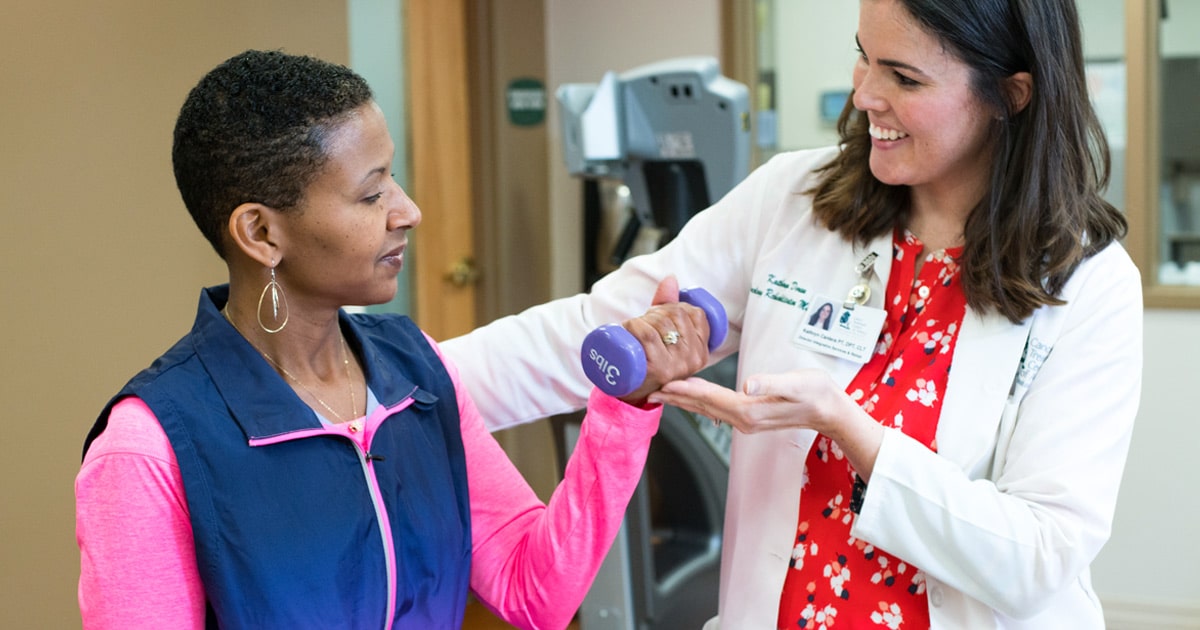The male prostate is a gland that is responsible for producing the majority of the semen that carries sperm. It is a part of the male reproductive system and is situated underneath the bladder. It also engulfs the entire upper section of the urethra, which is key, as the urethra is the tube that is responsible for transporting urine from the bladder. Prostate cancer is a common form of cancer in men that affects the prostate cells in the body. It impedes their control and normal functionality in regards to cellular growth and mitosis. Sadly, prostate cancer is the most common form of cancer in Canadian men, and 1 in 7 men will be diagnosed with prostate cancer at some point in their life. Prostate cancer should be taken very seriously, and measures must be taken to help patients who have prostate cancer obtain relief from their symptoms while helping their conventional prostate cancer treatments. Here, we will discuss the role that physiotherapy treatment can have in helping men who have prostate cancer.

Most Common Symptoms of Prostate Cancer
Generally speaking, prostate cancer is slow-moving cancer, in the sense that it can take several years to spread. Some men who have prostate cancer will end up dying from some other condition or natural causes. However, some certain telltale symptoms or signs may indicate that something is amiss, so please contact your family GP or a urologist if you exhibit any of the following symptoms.
- Trouble performing sexually (i.e., impotence or trouble ejaculating)
- Pelvic or suprapubic discomfort or pain
- Urinary retention issues or other issues related to urination, such as a weak stream or incontinence
- Hematuria
- Perennial, inner thigh, or lower back stiffness or pain
- Blood in semen
Causes of Prostate Cancer
Interestingly, what causes prostate cancer is still unknown to the scientific community. However, there is a myriad of risk factors that can increase your risk of developing prostate cancer at some point in your life. For instance, being over the age of 65 is considered a non-modifiable risk factor for prostate cancer, as the majority of men who develop prostate cancer are diagnosed in their 60s, 70s, or 80s. African American men have the highest risk of developing prostate cancer and are more than twice as likely to die from the disease when compared to any other race. Family history is yet another non-modifiable risk factor, as your risk of developing prostate cancer will go up if your brother or father had the disease. The risk factor goes up even more if you have first degree relatives you have that have had the disease. Several modifiable factors can increase your risk of developing prostate cancer. For instance, increasing your intake of selenium and several essential vitamins and minerals can lower your risk, as will reducing the number of sexual partners that you have. Reducing your red meat and dairy intake may also lower your risk, as will reducing your exposure to harmful chemicals or substances, such as cadmium, lead, arsenic, asbestos mercury, herbicides, and pesticides.
Procedures to Treat Prostate Cancer
Patients who have localized prostate cancer will have several different treatment options available to them in Canada. For instance, they can opt for a prostatectomy, which involves the removal of the prostate. Hormone therapy may also be beneficial to some patients, while others may be prescribed chemotherapy, cryotherapy, or radiation therapy. Some patients may also be prescribed vaccine treatments to treat their prostate cancer, while others may be asked to take an active surveillance approach. This approach is where the patient is carefully monitored throughout their lifetime to check if their cancer has metastasized.
Metastatic Prostate Cancer
Unfortunately, prostate cancer that has spread is very difficult to cure. Most oncologists will take measures to help the patient obtain pain relief while also slowing down the progression of the disease. For example, they may administer Denosumab or Biphophonates to prevent, or at least slowdown, the spread of cancer to the patient’s bones. The oncologist may also prescribe certain pain-reducing medications if cancer has spread to the patient’s bones or other parts of the body. Other steps may be taken to decelerate the spread of cancer, such as physiotherapy treatment.
Why Physiotherapy Helps with Prostate Cancer
Physiotherapy can be used in conjunction with conventional medical treatments for prostate cancer. It can be used to help the patient cope with some of the side effects of their cancer treatment. To illustrate, a patient who has recently undergone radiation treatment or hormonal therapy may experience sexual dysfunction or pelvic discomfort from their prostate cancer treatments. Their doctor may suggest that they make an appointment with a local physiotherapist. This is so they can teach them some exercises that can help treat their pelvic pain and sexual dysfunction issues.
Physiotherapy Before and After Prostate Cancer Surgery
Most experts agree that a patient should see a physiotherapist before their prostate cancer surgery so that they can learn the proper pelvic floor and general exercises before any symptoms develop. The patient should then be evaluated by a physiotherapist at the hospital, who should help them recuperate via long-term rehabilitative physiotherapy. For example, their hospital physiotherapist may prescribe a certain training regiment after surgery and may also teach their patients certain targeted pelvic floor exercises that will help reduce incontinence post-surgery.
Benefits of Physiotherapy
Physiotherapy can help prostate cancer patients strengthen their weakened pelvic floor muscles. They can also help boost urinary frequency and help boost energy and stamina levels post-surgery. Physical therapy has also been shown to help with general fatigue, and can also help treat erectile dysfunction, as well as bowel or bladder incontinence. Physiotherapy can help treat pelvic pain and can help greatly in the de-conditioning process after the patient has been treated for their cancer.




